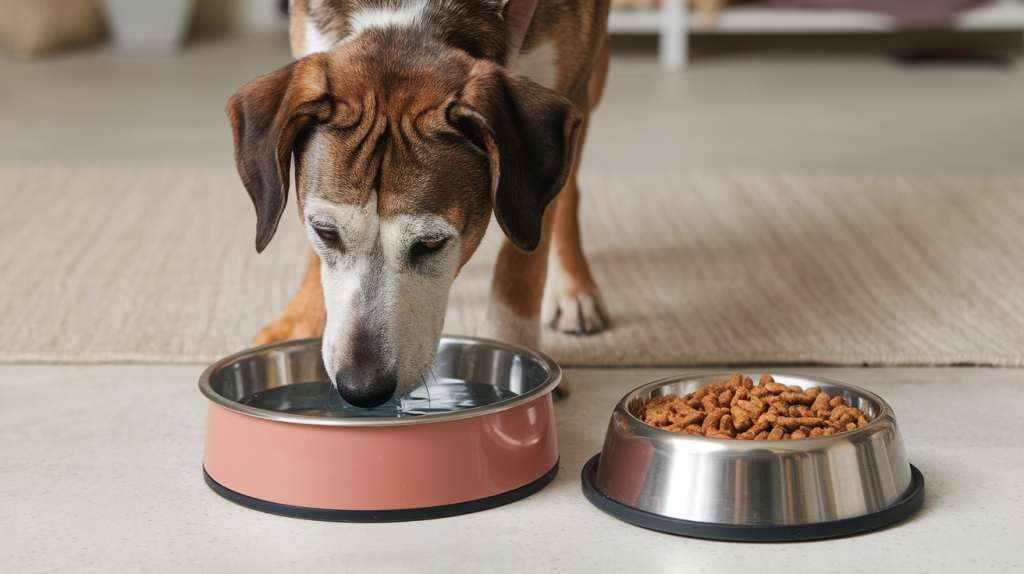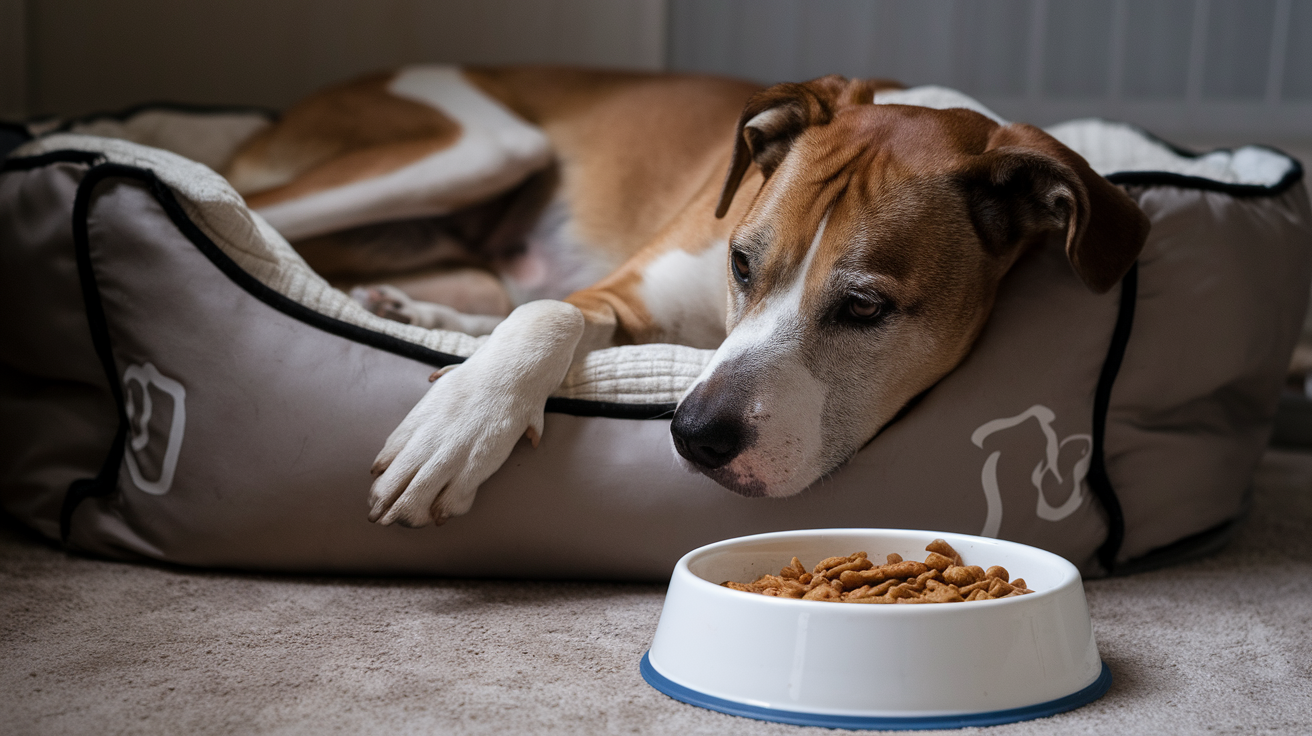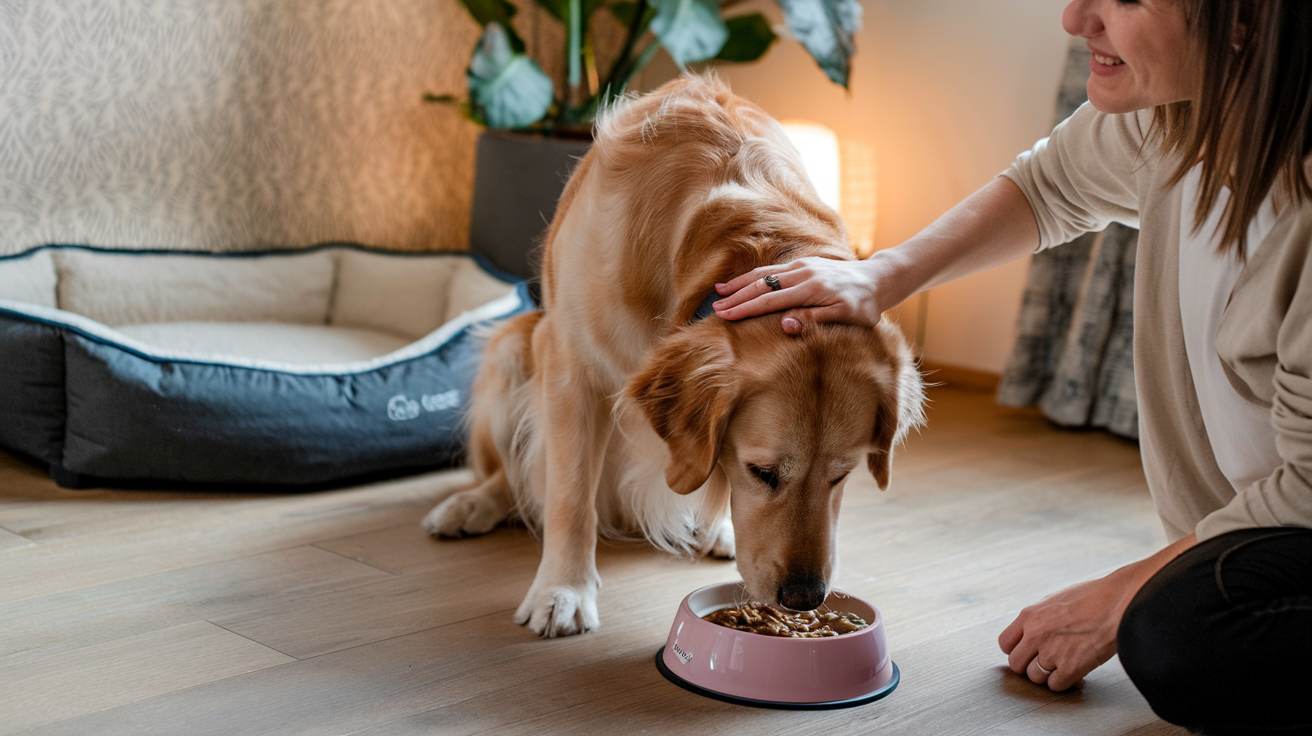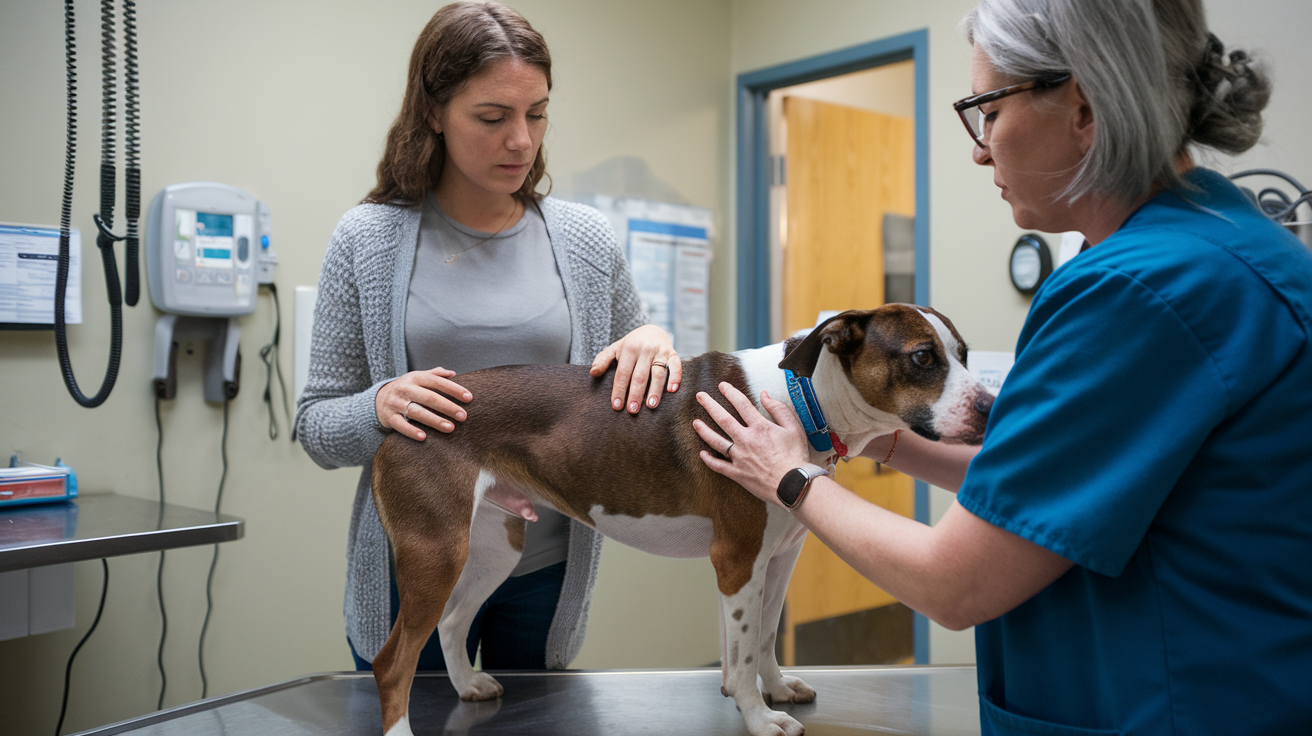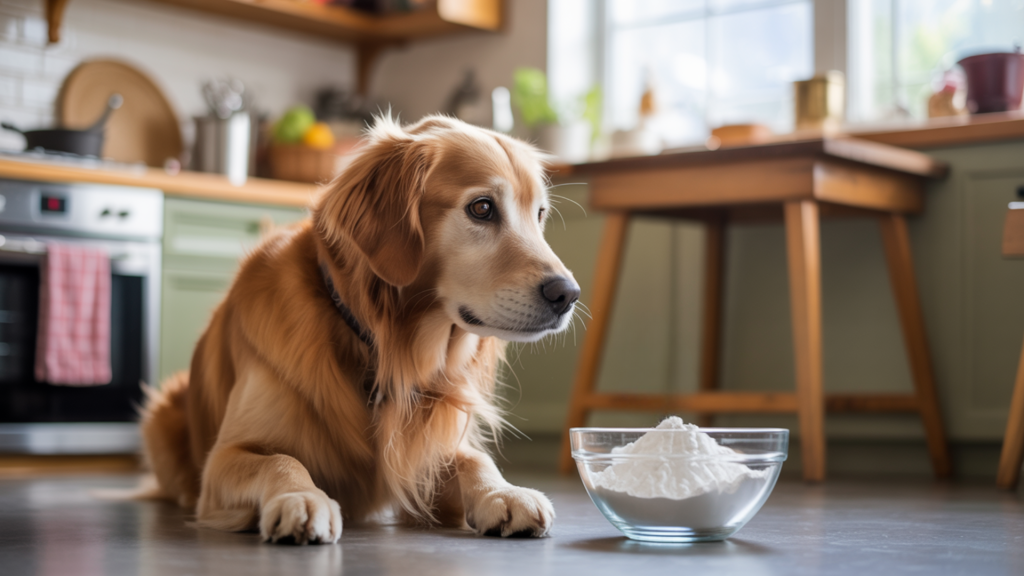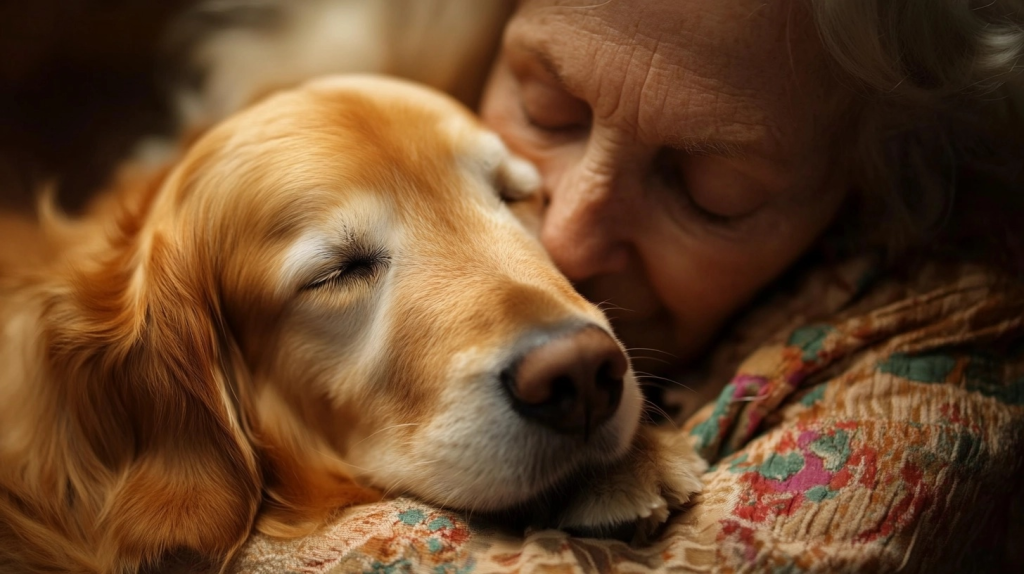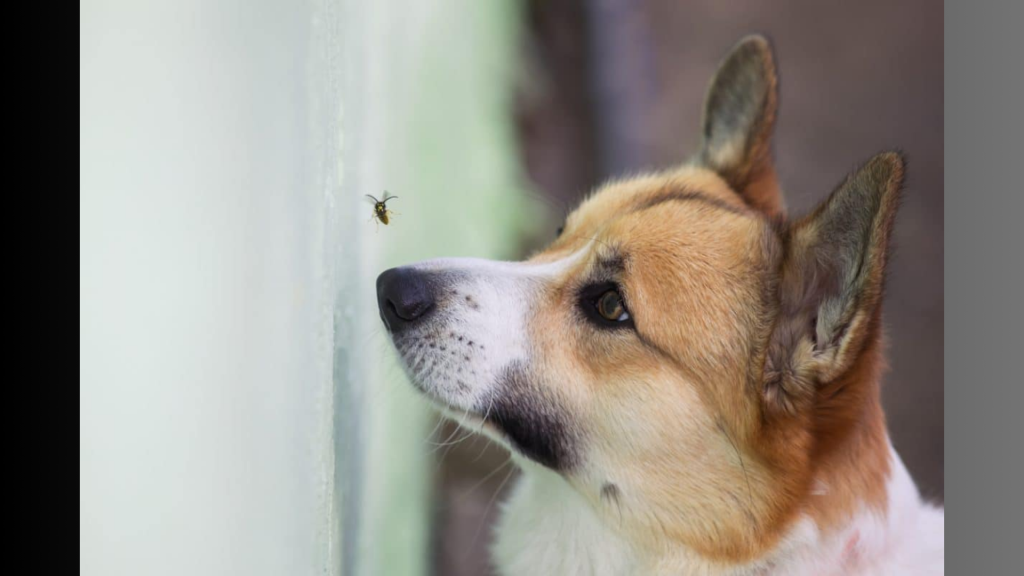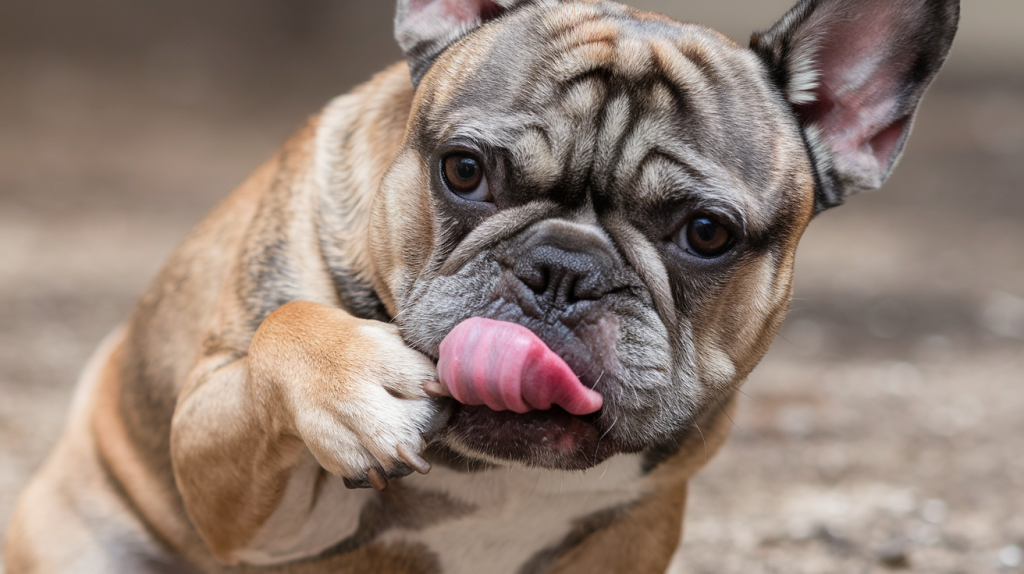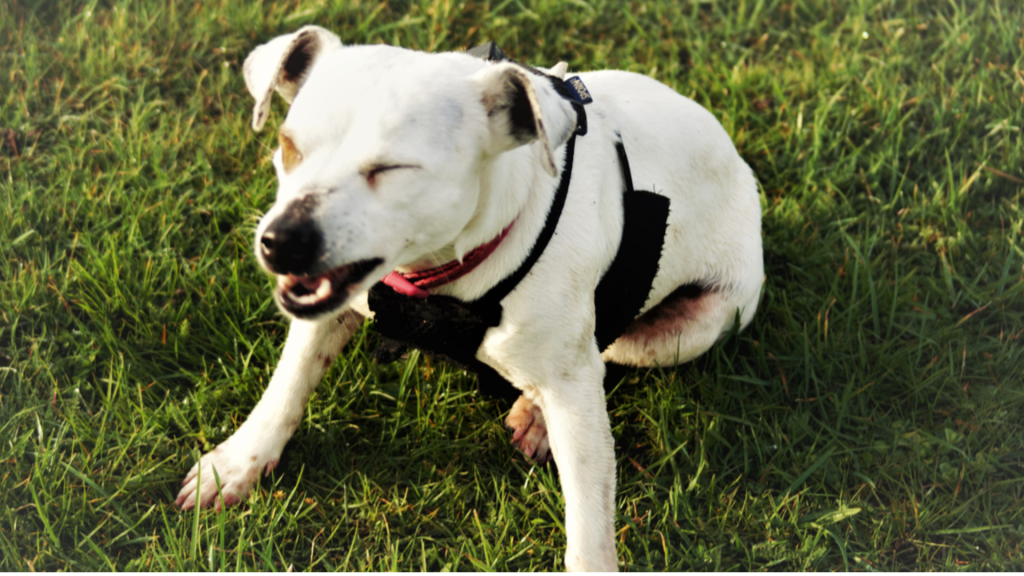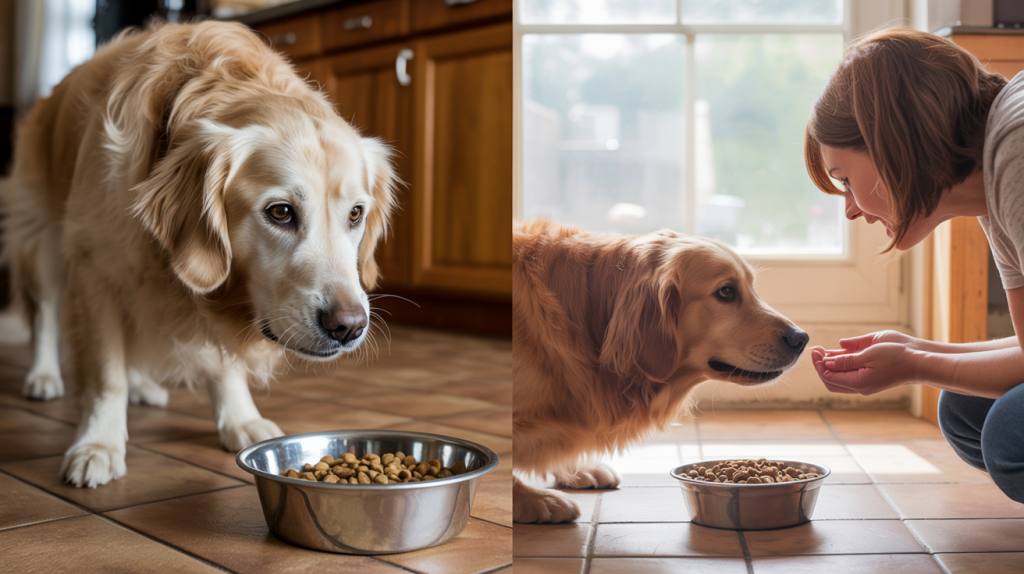It can be very upsetting for you when your dog not eating but drinking water.
Many pet parents focus on the loss of appetite but miss that their dog keeps drinking normally. This could be a sign of a health issue, or it may be nothing serious.
Knowing these signs can help catch minor problems early or prevent serious emergencies.
In this blog, you’ll learn the possible reasons behind this behavior, the signs to watch for, how you can help, and when it’s time to visit the vet.
Understanding Normal Dog Eating Habits & Appetite Changes
Most healthy dogs follow predictable eating patterns. They typically eat one to two meals per day at regular times, showing enthusiasm for their food. A normal dog will finish their meal within 15-20 minutes and maintain consistent portion sizes based on their age, size, and activity level.
Tracking a dog’s eating habits helps owners spot problems early. When pet owners pay attention to how much, how often, and how eagerly their dog eats, they create a baseline for what’s normal. This makes it easier to notice when something changes.
Changes in eating habits often signal health issues before other symptoms appear. A dog that suddenly becomes picky, eats much slower than usual, or stops eating altogether may be experiencing stress, illness, or pain.
Even small shifts, such as eating half their normal portion or taking longer to finish meals, deserve attention. These early warning signs give you the chance to address problems before they become serious health concerns.
Common Reasons for a Dog Not Eating but Drinking Water
When dogs refuse food but still drink water, it’s often a sign that dog not eating but drinking water has underlying causes. Understanding these helps owners decide between immediate vet care or home remedies.
Illness and Physical Pain
Dogs naturally lose their appetite when they feel unwell or experience pain. Dental disease causes mouth discomfort that makes chewing difficult.
Stomach upset, intestinal blockages, or infections create nausea that kills the desire to eat. Internal pain from conditions like pancreatitis or arthritis also suppresses appetite while leaving thirst unaffected, as the body still needs hydration.
Medication and Treatment Effects
Recent vaccinations often cause a temporary loss of appetite as the immune system responds. Many medications produce nausea or stomach upset as side effects.
Antibiotics can frequently disrupt digestive balance, causing dogs to feel queasy. These effects usually resolve within a few days as the body adjusts to the treatment.
Stress and Anxiety Issues
Dogs react to stress by losing interest in food while maintaining normal drinking habits. Moving to a new home, adding family members, or schedule changes create anxiety.
Loud noises, such as those from construction, storms, or fireworks, trigger stress responses. Some dogs become too nervous to eat when their routine gets disrupted, but they continue drinking because thirst is a stronger biological drive than hunger.
Food-Related Problems
Dogs develop negative associations with their food after experiencing something unpleasant. A sudden diet change can cause rejection of new flavors or textures.
Some dogs become picky eaters, holding out for treats or human food. Spoiled food, contaminated bowls, or food served at the wrong temperature can create aversion.
Environmental Changes
Changes in the feeding environment impact a dog not eating but drinking water. Temperature changes in the house, new scents, or rearranged furniture near feeding areas can make dogs uncomfortable during meals while leaving their drinking patterns normal.
Warning Signs to Watch For and When to Take Action
Not every case of reduced appetite requires emergency care, but certain warning signs demand immediate attention.
Some symptoms indicate serious health problems that can worsen quickly without treatment. Knowing which red flags to watch for helps pet owners make informed decisions about when to contact their veterinarian:
1. No food intake for over 24 hours: Small dogs and puppies need veterinary care sooner, as they can develop low blood sugar more quickly than larger adult dogs.
2. Signs of dehydration: Check for dry or sticky gums, sunken eyes, excessive panting, or skin that stays tented when gently pinched and released.
3. Vomiting or diarrhea: These symptoms, combined with appetite loss, can lead to rapid dehydration and indicate serious digestive issues requiring medical attention.
4. Visible pain or distress: Whimpering, restlessness, a hunched posture, difficulty moving, or reluctance to be touched may suggest underlying pain that requires professional evaluation.
5. Sudden behavior changes: Unusual hiding, aggression, confusion, or extreme lethargy alongside appetite loss often signal illness.
6. Rapid weight loss: Any noticeable weight drop within a few days indicates a serious health decline requiring immediate veterinary assessment.
How to Help Your Dog Eat: Simple and Practical Steps
When a dog stops eating but continues drinking, several simple strategies can help restore their appetite safely at home. These methods are most effective for dogs exhibiting mild symptoms without any serious warning signs:
- Offer bland, easy-to-digest foods: Boiled chicken with white rice provides gentle nutrition that’s easy on upset stomachs. This combination helps dogs feel better while getting essential nutrients.
- Warm the food slightly: Heating food releases stronger aromas that stimulate appetite. Room temperature or slightly warm food smells more appealing than cold meals straight from the refrigerator.
- Try hand-feeding or relocate meals: Some dogs eat better when hand-fed or when their bowl moves to a quieter, more comfortable location away from distractions and other pets.
- Change foods slowly: Introduce new flavors or brands over several days by mixing small amounts with familiar food. Sudden diet changes can upset sensitive stomachs further.
- Make mealtime interactive: Puzzle feeders and food-dispensing toys can spark interest in eating by turning meals into mental stimulation activities.
- Maintain clean feeding areas: Wash bowls daily and choose calm, quiet feeding spots where dogs feel safe and relaxed during meals.
When to Get Veterinary Help for Your Dog
If your dog not eating but drinking water for more than 24 hours needs professional medical evaluation, regardless of how much water they drinks.
Puppies, senior dogs, and small breeds require veterinary attention even sooner because they can develop dangerous health complications more quickly than healthy adult dogs.
Don’t wait if warning signs appear alongside appetite loss. Vomiting, diarrhea, lethargy, visible pain, or behavioral changes signal potential medical emergencies that need immediate care. Veterinarians can identify underlying medical causes that you might miss.
Many conditions respond well to treatment when caught early, but can become life-threatening if left untreated. Quick veterinary assessment provides peace of mind and proper treatment plans. Professional guidance ensures dogs receive appropriate care based on their specific symptoms and medical history.
Steps to Prevent Future Eating Issues in Dogs
Preventing future appetite problems requires consistent daily habits and attention to a dog’s overall health. Simple preventive measures help maintain steady eating patterns and catch potential issues before they become serious.
- Maintain regular feeding times: Dogs thrive on routine, so serve meals at the same times each day. This helps establish healthy eating habits and makes changes more noticeable.
- Choose high-quality nutrition: Feed your pet a diet of high-quality dog food tailored to their age, size, and health needs. Good nutrition supports overall health and reduces digestive problems.
- Schedule routine veterinary visits: Annual check-ups help detect health issues early, before they affect appetite or cause other symptoms.
- Track daily eating patterns: Keep mental notes of how much and how eagerly your dog eats. This baseline helps identify problems quickly when changes occur.
- Create a calm environment: Minimize household stress by keeping feeding areas quiet and avoiding sudden changes to your dog’s routine, living space, or family structure when possible.
Wrapping It Up
Recognizing when a dog not eating but drinking water can save your pet’s life. Watch daily habits to catch warning signs early.
The key is knowing when to try simple home remedies versus when to call your veterinarian.
Have you noticed changes in your dog’s eating habits? Share your experiences in the comments below, your story might help another pet owner recognize similar warning signs.

